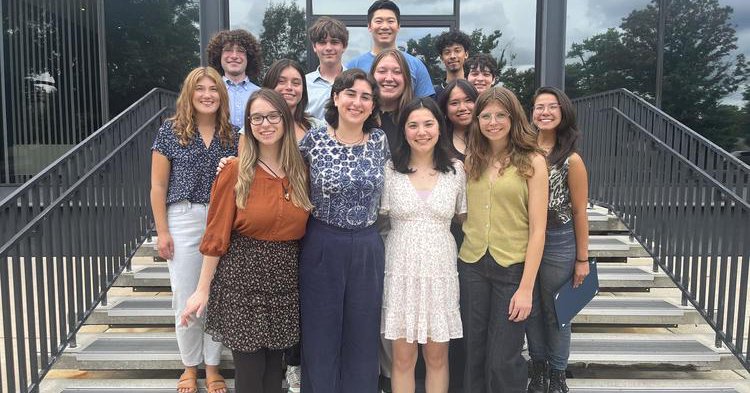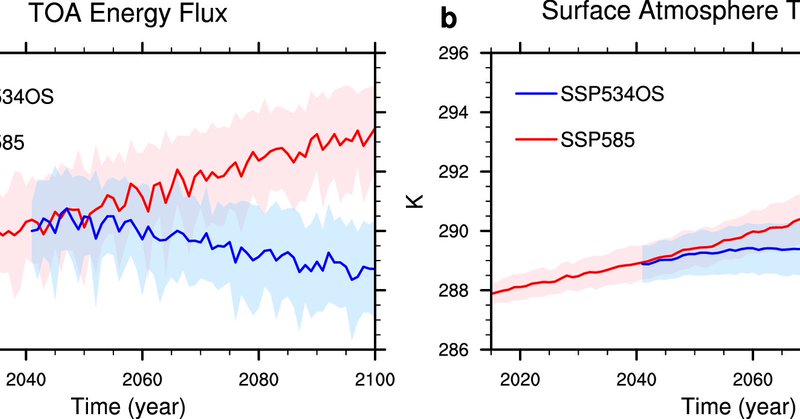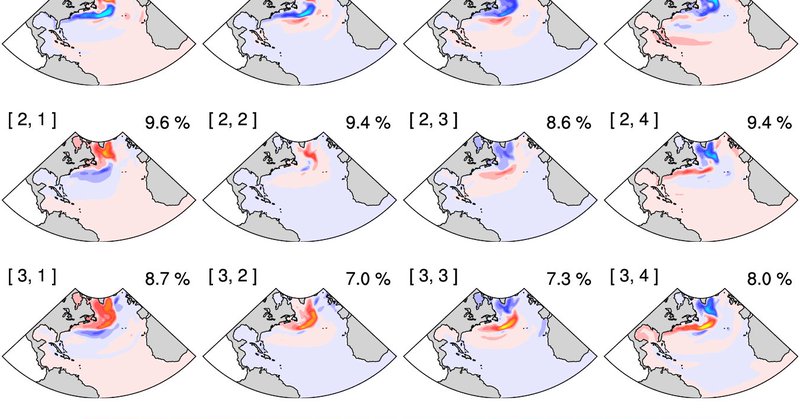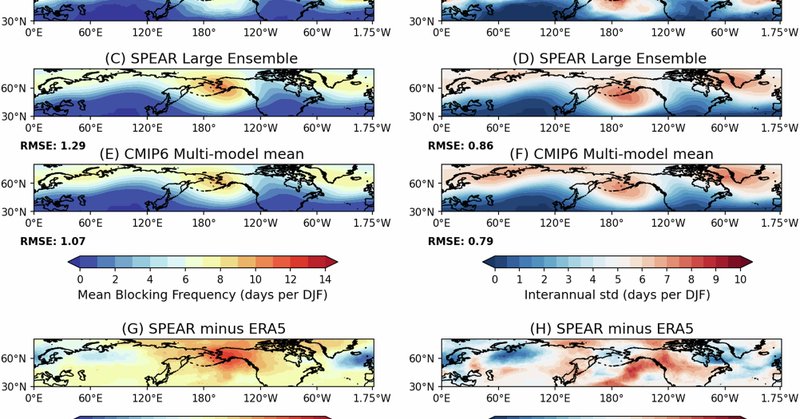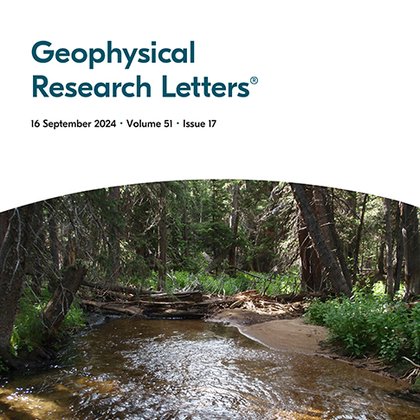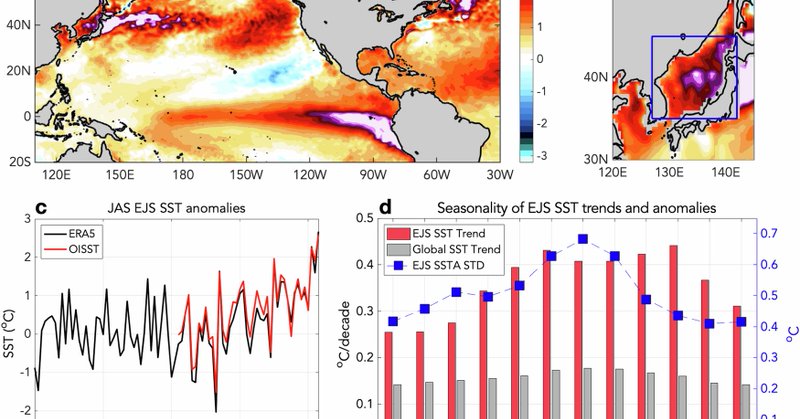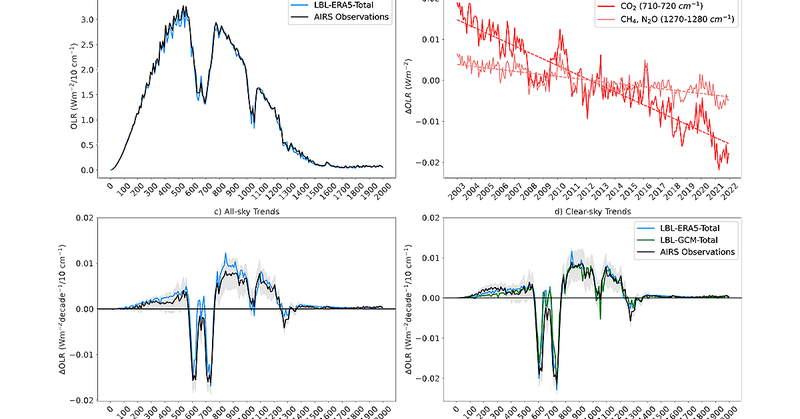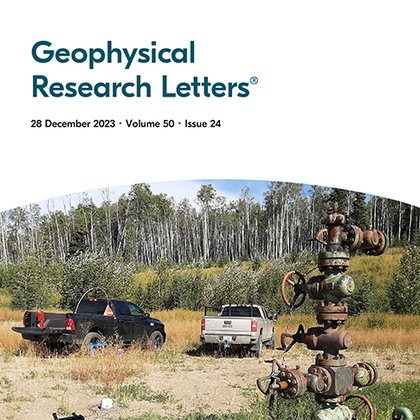
Cooperative Inst. for Modeling the Earth System
@PrincetonCIMES
Followers
530
Following
1K
Media
43
Statuses
681
The Cooperative Institute for Modeling the Earth System is a collaboration between Princeton University and GFDL to carry out research in earth system sciences.
Princeton, NJ
Joined May 2019
Are you an undergrad interested in gaining research experience in Earth system science? Apply to the 2025 CIMES summer internship now!.
cimes.princeton.edu
2025 Summer Research Internships (CLOSED)Cooperative Institute for Modeling the Earth System (CIMES) Research Internship Program at Princeton UniversityThe Cooperative Institute for Modeling the...
0
3
7
Check out a new paper by CIMES postdoc Shouwei Li that discusses the effects of mitigation on global heat imbalance.
nature.com
Communications Earth & Environment - Climate mitigation efforts will decrease ocean heat uptake in all ocean basins, except the North Atlantic, where weakened Atlantic Meridional Overturning...
0
0
0
A new study by CIMES postdoc @QinxueGu and her collaborators explores multiyear-to-decadal North Atlantic sea level predictability and prediction using a self-organizing map-based framework. Check it out here:
nature.com
npj Climate and Atmospheric Science - Exploring multiyear-to-decadal North Atlantic sea level predictability and prediction using machine learning
0
4
6
Using both observational data and seasonal forecasts simulated by GFDL-SPEAR, CIMES postdoc @meteopark and co-authors investigate the prediction skill of North Pacific wintertime blocking frequency and its linkage to downstream cold extremes.
nature.com
npj Climate and Atmospheric Science - A hybrid approach for skillful multiseasonal prediction of winter North Pacific blocking
0
0
0
A new paper about the warming of the NW Atlantic Shelf was just published in Geophysical Research Letters by CIMES Associate Research Scholar Vimal Koul and co-authors. You can read it here: .
agupubs.onlinelibrary.wiley.com
Dynamical downscaling enhances decadal prediction skill of Northwest Atlantic Shelf sea surface temperatures A temporary respite from rapid Northwest Atlantic Shelf warming is forecast for the co...
0
0
1
Want to learn more about Northwestern Pacific air-sea interaction? Check out this new publication from CIMES Associate Research Scholar Youngji Joh and co-authors!.
nature.com
npj Climate and Atmospheric Science - Predictability and prediction skill of summertime East/Japan Sea surface temperature events
0
0
1
RT @M2LInES: Check out our recent M²LInES newsletter! Recent articles by Brandon Reichl, @AlistairAdcroft, @PierreGentine, news, prizes, an….
0
2
0
RT @ZLabe: Happy to share the final version of our new review paper (led by @_the_iceman), which is out in BAMS (#OpenAccess): https://t.co….
0
11
0
RT @XiaLi_UU: Absolutely thrilled to receive this thoughtful gift from Prof. Randy Kertes and all the students at @RiderUniversity!!! Last….
0
2
0
RT @Princeton: Co-authored by @PrincetonCIMES director Stephan Fueglistaler, a new study finds that there is a nearly 7 in 10 chance of rec….
news.berkeley.edu
Combination of global warming and El Niño could lead to extreme humid heat stress
0
4
0
RT @ZLabe: Thrilled to share our new review paper that dives into using extreme event attribution information for improving infrastructure….
0
33
0
Dr. Raghuraman's (@rshivpriyam) paper featured below was selected as an EOS Editor's Highlight! Check it out here: @AGU_Eos @theAGU #AGUpubs.
eos.org
Analysis of infrared satellite measurements identifies the climate response to an increase in greenhouse gases in the atmosphere.
A new paper by @rshivpriyam et al. directly identifies heat signatures of greenhouse gas increases in long-term satellite measurements, and the evolution of the Earth system in response to these increases can now be tracked. Check it out!.
0
1
4
RT @ZLabe: Our new publication is out in @EarthsFutureEiC which compares changes in summer temperatures across the USA between observations….
0
21
0
RT @NVergopolan: Hey @Princeton! .I'm looking forward to sharing insights on using satellite data and physical models for water resource mo….
0
6
0
A new paper by @rshivpriyam et al. directly identifies heat signatures of greenhouse gas increases in long-term satellite measurements, and the evolution of the Earth system in response to these increases can now be tracked. Check it out!.
agupubs.onlinelibrary.wiley.com
Direct monitoring of the radiative impact of greenhouse gas changes is now possible through hyperspectral infrared satellite observations Observed spectral trends include the signatures of an inc...
0
2
6

